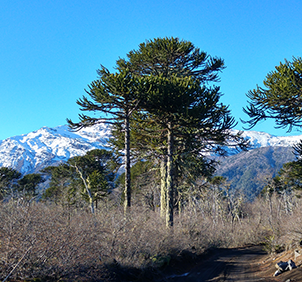Combining satellite-based rainfall data with rainfall - runoff modelling to simulate low flows in a Southern Andean catchment
Main Article Content
Abstract
Since 2010, Chile has been affected by a long-term drought, often referred to as the Mega-Drought. To adapt to future drought events, we need reliable hydro-climatic information based on robust observations and models. However, reliable hydro-climatic data needed for hydrological modelling of remote Andean catchments are rarely available. Our objective was therefore to identify the most suitable combination of different rainfall estimates with two rainfall-runoff models of varying complexity to reliably simulate low flows related to drought.
We forced the widely used SWAT and HBV-light models with four satellite-based rainfall estimates (SREs) (CHIRPSv2, MSWEPv1.2, MSWEPv2.0, TMPA 3B42v7) and inverse distance weighted (IDW) precipitation observations for the main headwater catchment of the Imperial River basin (Araucanía, 38°N). Sobol global sensitivity analysis and calibration were carried out using the hydroPSO R package, using two objective functions focused on the performance of low flows (logNSE and low flows KGE).
Despite the differing amount and temporal distribution of water, for all four SREs, the Sobol sensitivity analysis resulted in robust identification of key model parameters for all SWAT optimisation runs, with most sensitivity for parameters related to deep groundwater recharge, lateral flow travel time and the SCS runoff curve number. For the HBV-light model, only parameters related to snow-melt and deep groundwater recharge were robustly identified for the wetter SRE products. For both models and the two objective functions, the best efficiencies were obtained with the wetter SREs (MSWEP v1.2 and CHIRPSv2) as well as with IDW.
We found that SREs combined with rainfall-runoff modelling provide a valuable instrument to simulate daily discharges for the Upper Imperial River Basin. The resulting models are hence suitable to project low flows and water availability; information that is requested by local decision makers needed to design irrigation systems for the agricultural downstream area and the secure water supply of settlements in the context of future droughts.
Article Details
Issue
Section

This work is licensed under a Creative Commons Attribution-NonCommercial-NoDerivatives 4.0 International License.

